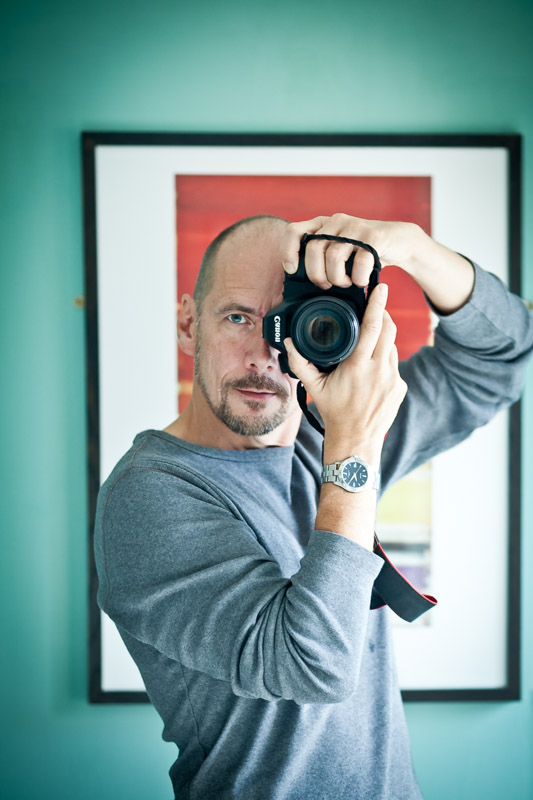A Life Less Ordinary
I recently went to a reading by the poet Simon Armitage. He recounted walking along the cliff path in Cornwall and, seeing a particularly amazing view, he stopped to take it in.Someone in the audience asked him if he wrote a poem about that view. He replied: “no, I didn’t have to, I had my camera with me and took a picture instead.”
I too used to write poetry, and when I was about nine, won a national poetry competition. Soon after that my uncle Les bought me a camera, a little Fuji. I believe we were on holiday at the time and my mum remembers that I ran around taking pictures of everything, oblivious to the cost of film and processing.
I was hooked. No more poetry.
As a teenager I managed to save for my first SLR, a Russian (in those days Soviet) Zenit and would take it to gigs, arriving early enough to get down the front and snap away in slide film and black and white. The Jam were my favourites.
It would be nice to say that, having discovered my ‘calling’, I left school, trained to be a photographer and joined the ranks of professionals. Unfortunately I was also academically gifted. I dropped my art A Level, studied politics at Sussex university and started a career in PR in London. I climbed the greasy pole for a few years until I became hooked on surfing after meeting a girl from Newquay. Weekends and holidays were spent seeking out waves, falling in love with Cornwall and the ocean.
So when my ‘career’ took a long pause we took the opportunity to move to Kernow. Cornwall was even more atrocious for jobs than it is now and as much out of necessity as a deep desire to start our own business we decided to launch a bodyboarding magazine, ThreeSixty.
This was 1991. There was only a handful of surf photographers in England in those days and no-one really bothered with bodyboarding, so I had to re-acquaint myself with photography. I bought a second-hand 800mm Canon lens, a lovely Canon T90 and proceeded to burn through dozens of rolls of film, learning my craft through trial and error. This was before autofocus and sometimes I wouldn’t even get one usable image from a roll of film.
Still, despite the blurry images, the magazine did well and bodyboarders loved it. We formed Orca Publications and launched Carve surfing magazine in 1994. Surfers loved Carve. Money coming in meant we could invest in new autofocus gear and I headed off to the North Shore of Hawaii for the first time with a brand spanking new 600mm lens. I am eternally grateful to the generosity of spirit of South African photographer Chris van Lennep who gave me invaluable advice and guidance, not least to use Fuji Velvia film. When I looked at my first roll of processed Velvia I soon saw why: I was entranced by the way Velvia had transformed the Hawaiian light and the blues of the waves. I still don’t think digital comes close to the beauty of those Velvia images.
I had become a surf photographer. I spent two more winters on the North Shore: I journeyed to all the Canary Island, Morocco, Costa Rica and France. I honed my eye, I learned how to anticipate and capture the fleeting moments in time when surfers are at the apex of their moves. Brought back packages of stories for the mags. It was fun.
A couple of years ago someone at Orca had the bright idea of publishing a cookbook about a surfing couple who had left the rat race to open a cafe on the west coast of Ireland. So in the middle of December that year I found myself in Strandhill shooting food in a shed in the back of the cafe, and trying to recreate a “summery feel” on the beach with a yoga instructor. I loved every minute. The Surf Cafe Cookbook was a huge success and in 2013 I struck out on my own as a food, interiors and commercial photographer. In 2014 I will shoot weddings.
So what the hell has all this got to do with poetry? I’ve been taking photos and having them published for over 20 years without really thinking about what I was actually doing. It’s only now, when I’ve had to write about myself for this website, that I’ve zoomed in on what it is. Poets tell stories using words, punctuation, rhythm. Photographers tell stories using light, tone and composition,amongst other things. Great photos will make you cry, laugh, wonder at the beauty of the world. Photographers are visual poets, we tell stories with our images. This is what I do.
Mike Searle, visual poet.

